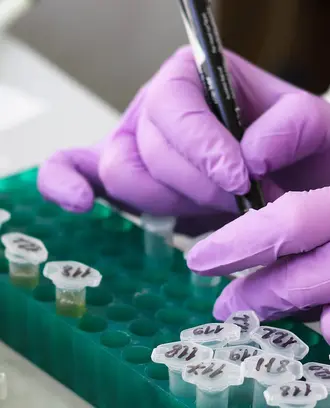Late last year, World Health Organization officials warned that as devasting as the COVID-19 pandemic has been medically, socially, economically, and politically, it is probably not the big one—the kind of deadly outbreak that gives experts real cold sweats. World Health Organization Emergencies Chief, Mark Ryan, recently warned that the current pandemic shouldn’t be something written off as a once in a century event. Rather, it should serve as a wake-up call to get ready for the next one.
Steven Spear is a senior lecturer at the MIT Sloan School and Founder of See to Solve LLC. His work focuses on building adaptive and resilient complex organizations.
Covid-19 will be bad news until many more people are vaccinated. However, its effects were cushioned by symptoms that were mild for many albeit terrible for others. What if the next virus has an even higher replication factor, worse symptoms, a higher death rate, or some nightmarish combination?
That’s not just paranoia. Development deeper into the wilds, the witch’s kettle of myriad diseases, and our interconnectivity make another pandemic more, not less, likely. Therefore, we need defensive private, administrative, and governmental mechanisms that we can activate quickly and that can spread quickly too. In short, we need a viral defense. Given the scale of such systems and the time needed to create them, we need to prepare now. Society and its bureaucracies are slow and deliberate. Viruses are not.
Such improved preparations will have three characteristics:
- (a) Innate triggers including immediate measures to identify, investigate and begin containing potential pandemics,
- (b) Quickly activated problem-solving teams at the local level to create temporary solutions, and
- (c) Information sharing mechanisms so that a collective understanding can be synthesized and shared quickly. Some elements of such a defense are already in place, but legislative and regulatory actions are needed to enable coordination among federal state and local authorities, and most importantly between the public and private sectors.
Innate Triggers and Responses: With COVID, early recognition was slowed because scientists needed permission to go to Wuhan, which was denied. Just as FD, PD, and EMT automatically respond to alarms, and decide only after reacting if the alarm was somehow false, public health authorities need a similar policy.
Distributed Problem Solving: This happened at hospitals for sure, as supportive care was refined. That’s why we saw lengths of stay decline and survival rates improve. Unfortunately, this idea of providing local institutions with guidance and allowing them authority to experiment wasn’t universal. So, we have, for example, large school systems trying to develop blanket solutions for populations that are remarkably diverse; one size hasn’t and never will fit all.
Information Sharing and Integrative Learning: After 9/11, there was a painful realization that so much information about al Qaeda existed, but it was littered throughout different intelligence and law enforcement agencies, with no way for a coherent montage to emerge. Establishing a directorship of national intelligence was the response, so local experiences could be gathered, a comprehensive picture synthesized, and coordinated information and instructions shared. If there’s a necessary role for the federal government, it’s creating such a connected network, given its unique legislative and regulatory authorities and financial resources.
Pandemic defense requires a massive government program that engages the private sector; the public sector cannot and has not been able to handle health security problems of scale. However, relevant capabilities for invention, production, and distribution exist both in commerce and higher education. That’s where our innovation eco-systems reside. As a result, we must harness the capabilities of both the private and public sectors to make our preparations most effective.
Steven Spear is a senior lecturer at the MIT Sloan School and Founder of See to Solve LLC. His work focuses on building adaptive and resilient complex organizations. Jason Paragas is a virologist and an advisor at Social Impact Capital.



